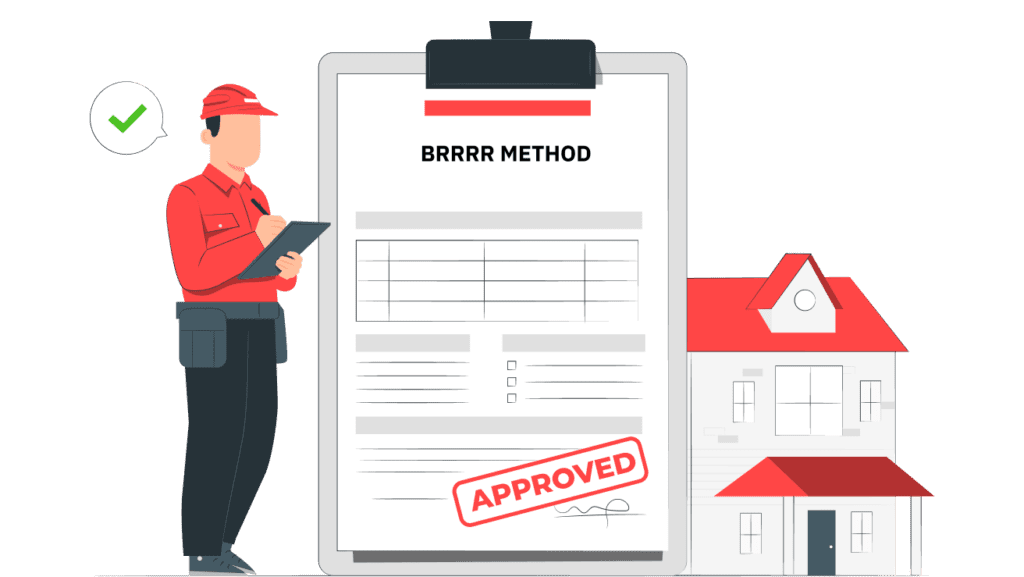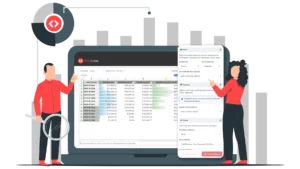Updated: May 22, 2024
You’ve conquered the first big hurdle: your initial real estate investment. You’ve endured those early mornings and late nights, juggling spreadsheets, welcoming guests, and maybe even tackling unexpected maintenance issues. As you gaze into the future, you ask yourself, “What’s next?” The answer is simple: it’s time to consider growing your STR portfolio.
Scaling up your short-term rental (STR) business goes beyond adding more properties to your portfolio. It’s about building a legacy and creating a reliable source of passive income that can weather any storm. To achieve this, you need a well-thought-out strategy that considers every move carefully. That’s why we’ve outlined the strategies for scaling your rental properties successfully and sustainably. Let’s dive in!
Why Should You Scale Your Short-term Rental Business?
Scaling your investments means strategically expanding your portfolio to boost profits, spread risk, and seize new opportunities. For real estate investors, this means adding more properties and diversifying across different real estate types, such as raw land, single-family homes, multifamily properties, and commercial spaces.
Short-term rentals scaling would allow STR businesses to tap into the growing market of travellers seeking unique lodging experiences. It’s about using platforms like Airbnb to maximise profits and create a robust investment strategy that adapts to changing trends and demands.
Growing your STR portfolio offers excellent opportunities for real estate investors. You can make good passive income and strengthen your financial portfolio. STRs are flexible, so you can quickly adjust to what travellers want, ensuring you fill up your rentals and earn more.
Plus, STRs often make more money than regular long-term rentals, especially if you know where your property is and how you manage your prices. This lets you grow your business by attracting different types of travellers looking for cool places to stay.
Read More: Unleashing the Power of Revenue Estimator Pro for New Property Launches


How to Scale Rental Properties Effectively?
1. Set the Proper Foundation for Your STR Portfolio
A solid foundation is critical when growing your short-term rental (STR) portfolio. Picture it like laying a solid groundwork for a sturdy house – it’s essential for future growth. Here’s a breakdown of how to get started:
Establish Clear Goals
Before jumping into the world of STRs, think about what you want to achieve. Do you aim to maximize vacation rental revenue, focus on properties with potential value appreciation, or diversify your portfolio? Having clear goals helps you make smart decisions and stay on track as you make vacation rental investments. For example, if you aim to maximise income, you might prioritize properties in high-demand tourist areas.
Educate Yourself
Real estate investing is more than just collecting rent checks. Different strategies exist to explore, like the BRRRR method (buy, rehab, rent, refinance, repeat) or investing in commercial properties. Take the time to learn about these approaches and choose the ones that fit your goals and the market you’re targeting. For instance, if you’re eyeing properties in a trendy urban area, learning about commercial real estate could open up new opportunities.
Learn From Experience
Your first STR property is like your training ground. It’s where you’ll learn valuable lessons in analyzing the market, managing properties, and keeping guests happy. Pay attention to what works well and what doesn’t, and use this knowledge to refine your strategy as you acquire more properties. For example, if guests appreciate thoughtful touches like welcome baskets, you can replicate this in other properties to enhance guest satisfaction.


Decide on Management
How you manage your STRs is a big decision. Will you handle everything to maintain full control, or hire property managers for convenience and expertise? Consider the pros and cons carefully before growing your STR portfolio. For instance, hiring a property manager could free up your time and ensure consistent guest experiences if you have a busy schedule or properties in different locations. Researching guides on scaling provided by property managers or getting recommendations from reputable management companies can help you make the right choice.
Read More: How to Manage Your Vacation Rental Home Remotely?
2. Conduct Thorough Market Research for Your STR Portfolio
Conducting thorough market research for your short-term rental (STR) portfolio is like putting on your detective hat before embarking on a treasure hunt. It’s all about understanding the landscape, identifying opportunities, and staying ahead of the game. Here’s how to navigate the essentials: Occupancy Rates, Seasonal Trends, and Competition Analysis.


Occupancy Rates
Consider occupancy rates as your STR property’s pulse—they tell you how often your property is booked. High rates mean strong demand and successful marketing, while low rates might signal it’s time to tweak your strategy. To get this number spot on, peek at similar properties in your area on platforms like Airbnb and Vrbo. A calendar full of bookings is excellent, but remember to factor in maintenance and downtime.
Seasonal Trends
Understanding vacation rental seasonality is like packing an umbrella for a rainy day – it helps you prepare for highs and lows. For example, a beach house might boom in the summer, while a mountain cabin shines during ski season. Knowing these patterns helps you set prices strategically. When demand soars in peak season, you can raise prices, while off-seasons might call for discounts or special offers to keep bookings flowing. Knowing the seasonal trends in different regions will help you diversify your portfolio to earn money throughout the year.
Competition Analysis
Keeping tabs on the competition is like scouting out your opponents in a game – it helps you understand what you’re up against. You don’t have to be the cheapest option, but knowing what others offer at what price helps you highlight your property’s unique selling points. Tools like PriceLabs Market Dashboard can dive deep into market data, showing you where your property stands. Knowledge is power here; the more you know about your competition, the better you can position your property to shine.
Market research for STR properties isn’t a one-time deal—it’s an ongoing journey that keeps you tuned into your investment’s heartbeat. You can use tools like PriceLabs Revenue Estimator PRO to research a potential short-term rental and analyse its monthly projected revenue, average daily rate, and occupancy. We have talked more about these tools in the section below.
3. Diversify your STR Portfolio
Understanding Diversification
Diversification means spreading your investments across different types of properties and locations. It’s like having a mix of fruits in a basket instead of just one kind. This way, if one type of property or area isn’t doing well, you have others to rely on.
Importance of Diversification
Diversifying your portfolio is important for several reasons. First, it reduces the risk of losing money because if one part of the market isn’t doing well, others might make up for it. Second, it ensures you have money coming in all year round because different types of properties appeal to different renters at different times. Third, it strengthens your investments and enables you to handle economic or market changes.
Types of Properties to Consider
Consider investing in properties like houses, apartments, stores, or vacation rentals when diversifying. Each type has its own benefits and attracts different kinds of renters, which helps balance out your investment strategy.


Strategic Geographic Allocation
Spread your vacation rental investments across different areas to avoid relying too much on one place. Look for locations with strong economies and different industries so your investments aren’t all tied to one place or type of business.
Risk Management and Long-term Growth
Keep an eye on your investments and be ready to change your plans if needed. Spread your investments across different properties and places to ensure you’re not putting all your eggs in one basket. Focus on long-term growth and make smart decisions to help your investments grow.
Read More: Understanding Revenue and Occupancy Expectations of Your Property
4. Scale Strategically
Utilize Your STR Revenue History for Financing
Your track record of rental income speaks volumes to lenders, showcasing your success as a vacation rental investor. By presenting a well-documented history of your STR revenue, you can more easily secure financing for new properties. This opens doors to better loan terms and allows you to expand your portfolio strategically. Learning how to leverage your revenue history effectively is key to unlocking opportunities for growth.
Tap into Equity for Expansion
Equity in your existing properties can be a valuable asset when financing the expansion of your STR portfolio. You can access funds at competitive rates through home equity loans or lines of credit, using the value you’ve built in your current investments as collateral. This approach provides the capital needed to grow your STR portfolio and maximizes the use of your existing assets to foster growth.
Implement the BRRRR Method
The BRRRR method—Buy, Rehab, Rent, Refinance, Repeat—provides a structured approach to scaling your real estate investments. You can reinvest equity into new projects by rehabilitating underperforming properties and refinancing based on the improved value. This method optimizes your capital’s efficiency and accelerates your property portfolio’s growth. It’s a favored strategy among savvy investors for its systematic and effective approach to expansion.


5. Leverage Technology to Optimize Revenue
Revenue Estimator Pro
Revenue Estimator Pro is like having a crystal ball for your rental income. This tool gives you instant reports on things like monthly revenue, average daily rates, and occupancy rates. Armed with this data, you can make smart decisions about pricing strategies from day one, setting you up for success.


Dynamic Pricing
Once your property is up and running, you need to keep those bookings coming in, Which is where dynamic pricing comes into play. PriceLabs Dynamic Pricing Tool is like having a personal pricing assistant. It analyzes market trends, competition, and booking patterns in real time. Then, it adjusts your prices accordingly to maximize your income. It’s like having your finger on the market’s pulse, ensuring you’re always charging the right price at the right time.


Market Dashboard
But wait, there’s more! With the PriceLabs Market Dashboard, you can stay ahead of the game by monitoring market trends and competitor activity. It’s like having a bird’s-eye view of the entire rental market. You can track competitor pricing, demand patterns, and industry trends, allowing you to make informed pricing decisions. Plus, you can customize your comp sets to compare your property to the most relevant competitors in your area. It’s like having a secret weapon to keep you one step ahead of the competition.


Key Takeaways
- Building a strong foundation: Before growing your STR portfolio, establish clear goals, educate yourself on different investment strategies, learn from experience, and decide on management approaches to lay a solid foundation for growth.
- Conducting thorough market research: Market research is essential for understanding the STR market’s occupancy rates, seasonal trends, and competition analysis. Tools like PriceLabs Revenue Estimator Pro can provide valuable insights into potential income and pricing strategies.
- Diversifying your STR portfolio: Diversification across different property types and locations helps mitigate risks and ensures steady income streams throughout the year. Consider investing in various property types and spreading investments across different geographic areas.
- Scaling strategically: Utilize your STR revenue history to secure loans for additional properties, leverage equity in existing properties for expansion, and implement strategies like the BRRRR method to optimize growth. Leveraging technology, such as PriceLabs’ dynamic pricing tool and Market Dashboard, can further optimize revenue and stay ahead of the competition.








